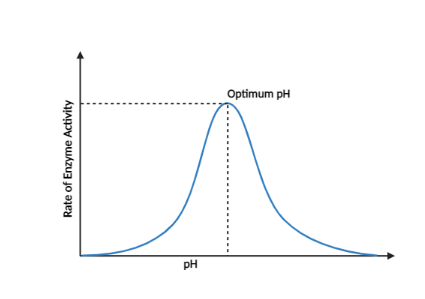
How does $ pH $ affect photosynthesis?
Answer
422.1k+ views
Hint :Photosynthesis is the technique of converting light energy to chemical energy by green plants and other species. Light energy is absorbed and used by green plants during photosynthesis to turn water, $ C{O_2} $ , and minerals into oxygen and energy-rich organic compounds.
Complete Step By Step Answer:
Photosynthesis involves the activity of enzymes in plant cells, which work best at specific pH levels.
The $ pH $ of water is an indicator of how acidic or basic it is. The range of $ pH $ is $ 0 $ to $ 14 $ , with $ 7 $ being the neutral value. Acidity is indicated by a $ pH $ less than $ 7 $ , whereas a $ pH $ greater than $ 7 $ indicates a base.
Each plant has a best or optimum $ pH $ for the activity of its enzymes. Enzymes in plants will denature, stop working, or slow down when the $ pH $ levels become too high or too low. Due to which they can no longer perform photosynthesis to their full capacity in the cell. If the $ pH $ is appropriate, the rate of photosynthesis will rise to its highest level.
As the $ pH $ of the plant moves away from the optimal $ pH $ , the rate of photosynthesis reduces.
For photosynthesis to take place effectively, the $ pH $ must be neutral. When the $ pH $ is $ 7 $ , the rate accelerates as rapidly as possible. The photosynthesis takes place at a slower pace when the $ pH $ is $ 5 $ (closer to rainwater than $ pH $ $ 7 $ ).

Note :
Plants' growth and survival can be affected by a low $ pH $ . Nutrient deficiencies, decreased harvest, and seedling growth rate are some of the negative effects of soil $ pH $ on plant growth. Plants require different soil conditions, and some species can grow at lower $ pH $ levels than others.
Complete Step By Step Answer:
Photosynthesis involves the activity of enzymes in plant cells, which work best at specific pH levels.
The $ pH $ of water is an indicator of how acidic or basic it is. The range of $ pH $ is $ 0 $ to $ 14 $ , with $ 7 $ being the neutral value. Acidity is indicated by a $ pH $ less than $ 7 $ , whereas a $ pH $ greater than $ 7 $ indicates a base.
Each plant has a best or optimum $ pH $ for the activity of its enzymes. Enzymes in plants will denature, stop working, or slow down when the $ pH $ levels become too high or too low. Due to which they can no longer perform photosynthesis to their full capacity in the cell. If the $ pH $ is appropriate, the rate of photosynthesis will rise to its highest level.
As the $ pH $ of the plant moves away from the optimal $ pH $ , the rate of photosynthesis reduces.
For photosynthesis to take place effectively, the $ pH $ must be neutral. When the $ pH $ is $ 7 $ , the rate accelerates as rapidly as possible. The photosynthesis takes place at a slower pace when the $ pH $ is $ 5 $ (closer to rainwater than $ pH $ $ 7 $ ).

Note :
Plants' growth and survival can be affected by a low $ pH $ . Nutrient deficiencies, decreased harvest, and seedling growth rate are some of the negative effects of soil $ pH $ on plant growth. Plants require different soil conditions, and some species can grow at lower $ pH $ levels than others.
Recently Updated Pages
Can anyone list 10 advantages and disadvantages of friction

What are the Components of Financial System?

How do you arrange NH4 + BF3 H2O C2H2 in increasing class 11 chemistry CBSE

Is H mCT and q mCT the same thing If so which is more class 11 chemistry CBSE

What are the possible quantum number for the last outermost class 11 chemistry CBSE

Is C2 paramagnetic or diamagnetic class 11 chemistry CBSE

Trending doubts
The correct order of melting point of 14th group elements class 11 chemistry CBSE

One Metric ton is equal to kg A 10000 B 1000 C 100 class 11 physics CBSE

What is the specific heat capacity of ice water and class 11 physics CBSE

State the laws of reflection of light

Proton was discovered by A Thomson B Rutherford C Chadwick class 11 chemistry CBSE

Why does niobium have a d4s1 electron configuration class 11 chemistry CBSE




